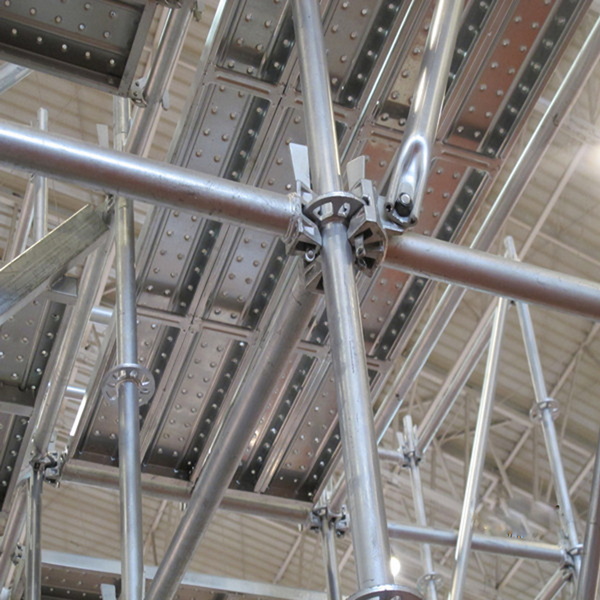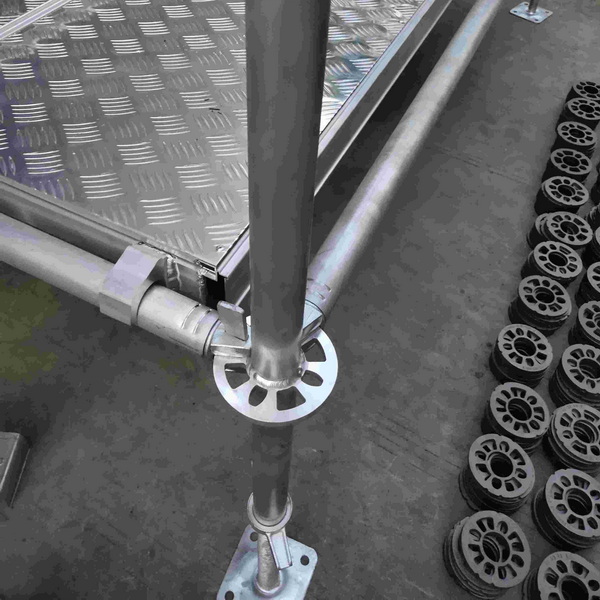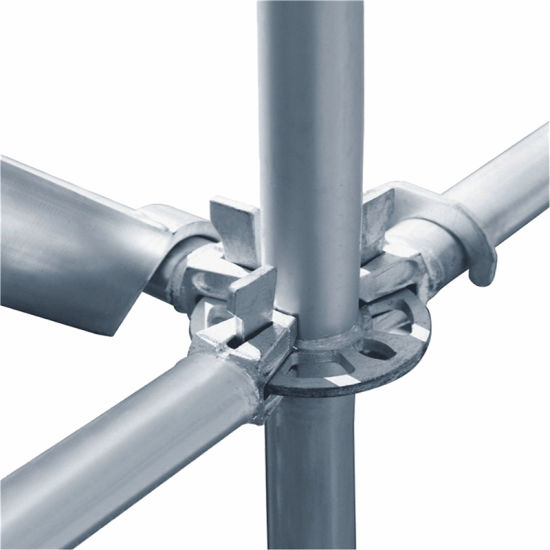Content Menu
● Introduction to Ringlock Scaffolding and Traditional Systems
>> What is Ringlock Scaffolding?
>> What Are Traditional Scaffolding Systems?
● Key Safety Features of Ringlock Scaffolding
>> 1. Unique Rosette Locking Mechanism
>> 2. Modular Design for Rigidity and Stability
>> 3. Faster and Safer Assembly
>> 4. Integrated Safety Components
>> 5. Easy Inspection and Maintenance
● Comparing Safety: Ringlock vs. Traditional Systems
● Additional Safety Advantages of Ringlock Scaffolding
>> Enhanced Load-Bearing Capacity
>> Versatility in Complex Structures
>> Reduced Risk of Accidental Disassembly
>> Durability and Corrosion Resistance
● Additional Considerations for Safety
>> Training and Competency
>> Compliance with Safety Standards
>> Environmental and Site Conditions
● Advantages and Limitations of Ringlock Scaffolding
>> Advantages
>> Limitations
● Advantages and Limitations of Traditional Scaffolding Systems
>> Advantages
>> Limitations
● Conclusion
● FAQ
>> 1. What makes Ringlock scaffolding safer than traditional tube and clamp systems?
>> 2. How does the assembly speed of Ringlock scaffolding impact safety?
>> 3. Are there integrated safety features in Ringlock scaffolding?
>> 4. Can Ringlock scaffolding be used on complex or curved structures safely?
>> 5. How does Ringlock scaffolding facilitate easier safety inspections?
Safety is a paramount concern on any construction site, and scaffolding plays a crucial role in ensuring that workers can perform their tasks at height securely. Among the various scaffolding systems available, Ringlock scaffolding stands out as a safer and more efficient alternative to traditional scaffolding systems like tube and clamp or frame scaffolding. This article explores the many aspects that make Ringlock scaffolding inherently safer, examining its design, assembly, load capacity, stability, and integrated safety features.

Introduction to Ringlock Scaffolding and Traditional Systems
What is Ringlock Scaffolding?
Ringlock scaffolding is a modular system based on a unique rosette (ring) connector welded onto vertical standards at fixed intervals. This rosette allows multiple ledgers and braces to be connected securely at various angles, creating a highly flexible and robust scaffold structure. The system is designed for quick assembly, adaptability, and superior load distribution.
What Are Traditional Scaffolding Systems?
Traditional scaffolding systems include tube and clamp scaffolding and frame scaffolding:
- Tube and Clamp Scaffolding: Uses individual tubes connected by clamps or couplers, allowing flexibility but requiring skilled labor and time-consuming assembly.
- Frame Scaffolding: Prefabricated welded frames connected by cross braces, simpler but less adaptable to complex geometries.
While these systems have been industry standards for decades, they present challenges related to assembly complexity, stability, and safety features.
Key Safety Features of Ringlock Scaffolding
1. Unique Rosette Locking Mechanism
The rosette connector is the hallmark of Ringlock scaffolding. Welded at regular intervals on vertical standards, the rosette has multiple holes that allow ledgers and braces to be connected at up to eight different angles. This design provides:
- Secure, wedge-lock connections that prevent accidental disassembly.
- Multiple locking points that distribute loads evenly, reducing stress on individual components.
- Reduced human error during assembly, as the wedge locking system is straightforward and less prone to incorrect installation compared to bolt-based systems.
2. Modular Design for Rigidity and Stability
Ringlock scaffolding's modular components create a lattice structure that is inherently rigid and stable. The ability to connect braces and ledgers at multiple angles enhances lateral and diagonal stability, which is critical in withstanding wind loads and vibrations on site.
- The system's high load-bearing capacity ensures it can support heavy materials and equipment safely.
- The lattice design minimizes sway and movement, reducing the risk of collapse or accidents.
3. Faster and Safer Assembly
Ringlock scaffolding is designed to be assembled quickly and safely:
- Minimal tools required: Typically only a hammer for wedge locking, reducing the risk of tool-related injuries.
- Simplified connections: The rosette system reduces the number of components and complexity, minimizing assembly errors.
- Faster assembly and disassembly: Less time spent erecting scaffolds means reduced exposure to hazards during setup and teardown.
This efficiency not only saves costs but also enhances worker safety by limiting the time spent at height during assembly.
4. Integrated Safety Components
Ringlock scaffolding systems often come with integrated safety features that traditional systems lack or require as add-ons:
- Guardrails and midrails designed to fit seamlessly with the modular system.
- Anti-slip steel decking with integrated lift-off locks to prevent planks from being dislodged accidentally.
- Toe boards to prevent tools or materials from falling.
- Multiple tie-off points for harnesses, enhancing fall protection.
These features create a safer working environment by reducing fall risks and preventing falling objects.
5. Easy Inspection and Maintenance
The modular and standardized design of Ringlock scaffolding makes inspection and maintenance straightforward:
- Components are uniform and easy to check for wear or damage.
- The visible rosette connectors allow quick verification of secure locking.
- Damaged parts can be replaced individually without dismantling large sections.
This ease of inspection ensures scaffolds remain safe throughout the project lifecycle.
Comparing Safety: Ringlock vs. Traditional Systems
Safety Aspect | Ringlock Scaffolding | Traditional Systems (Tube & Clamp / Frame) |
Locking Mechanism | Wedge-lock rosette system with multi-angle connections | Bolt or clamp-based, prone to human error |
Assembly Complexity | Low – simple wedge locking, minimal tools | High – many components, bolts, and clamps |
Load Distribution | Even, through multiple locking points | Less uniform, stress on individual couplers |
Stability | High – lattice structure with multi-directional bracing | Moderate – depends on correct bracing and assembly |
Integrated Safety Features | Guardrails, anti-slip decks, toe boards standard | Often added separately, inconsistent |
Inspection & Maintenance | Easy due to modularity and visibility | More complex, parts less standardized |
Assembly/Disassembly Speed | Fast – reduces time at height | Slow – more labor and risk exposure |
Additional Safety Advantages of Ringlock Scaffolding
Enhanced Load-Bearing Capacity
Ringlock scaffolding's design allows it to support heavier loads than many traditional systems. This is crucial when working with heavy materials or equipment, reducing the risk of structural failure.
Versatility in Complex Structures
The rosette design enables connections at multiple angles, allowing Ringlock scaffolding to be safely used on curved facades, circular tanks, and irregular architectural shapes where traditional scaffolding struggles.
Reduced Risk of Accidental Disassembly
The wedge locking mechanism is self-locking under load, preventing accidental loosening. Traditional bolt-based systems can loosen if not properly tightened, posing safety hazards.
Durability and Corrosion Resistance
Ringlock scaffolding components are often hot-dip galvanized, providing excellent resistance to rust and corrosion. This durability ensures long-term safety even in harsh environments.

Additional Considerations for Safety
Training and Competency
Even with the safest scaffolding system, worker training and competency are critical. Ringlock scaffolding's intuitive design reduces the learning curve, but proper training on assembly, inspection, and use is essential to maximize safety benefits.
Compliance with Safety Standards
Ringlock scaffolding is designed to comply with major international safety standards such as:
- EN 12811 (European standard for temporary works equipment)
- OSHA regulations (Occupational Safety and Health Administration in the U.S.)
- BS 1139 (British standard for scaffolding components)
Compliance ensures that Ringlock scaffolding meets or exceeds safety requirements, providing confidence to users and regulators.
Environmental and Site Conditions
Ringlock scaffolding is better suited to withstand harsh environmental conditions such as strong winds, uneven terrain, and seismic activity due to its robust design and adaptability. This resilience enhances safety on challenging sites where traditional scaffolding might be less reliable.
Advantages and Limitations of Ringlock Scaffolding
Advantages
- Modular and flexible design: Easily adapts to complex structures.
- High load-bearing capacity: Suitable for heavy industrial use.
- Fast assembly and disassembly: Reduces labor costs and project timelines.
- Enhanced safety features: Multiple locking points and tie-offs for fall protection.
- Durability: Made from high-quality steel with corrosion-resistant finishes.
Limitations
- Higher upfront cost: Initial investment is more than frame scaffolding.
- Requires skilled labor: While assembly is faster, correct installation is critical.
- Component complexity: More parts to manage and maintain.
Advantages and Limitations of Traditional Scaffolding Systems
Advantages
- Cost-effective: Lower initial investment for simple projects.
- Simple design: Easy to understand and assemble for basic structures.
- Widely available: Commonly used and readily sourced worldwide.
- Lightweight components: Easier to handle for small-scale projects.
Limitations
- Limited adaptability: Not suitable for complex or curved structures.
- Lower load capacity: Not ideal for heavy industrial applications.
- Slower assembly for large projects: Requires more labor and tools.
- Bulkier components: More cumbersome to transport and store.
Conclusion
Ringlock scaffolding offers significant safety advantages over traditional scaffolding systems, thanks to its innovative rosette locking mechanism, modular design, and integrated safety features. Its ease of assembly reduces human error and exposure to hazards, while its superior load-bearing capacity and stability make it suitable for a wide range of construction projects, including complex and heavy-duty applications.
The system's built-in safety components such as guardrails, anti-slip decking, and multiple tie-off points further enhance worker protection. Additionally, the straightforward inspection and maintenance process helps maintain scaffold integrity throughout the project duration.
For construction professionals prioritizing safety, efficiency, and adaptability, Ringlock scaffolding represents a modern, reliable solution that significantly reduces risks compared to traditional scaffolding systems.

FAQ
1. What makes Ringlock scaffolding safer than traditional tube and clamp systems?
Ringlock scaffolding uses a wedge-lock rosette system that provides secure, multi-angle connections, reducing human error and accidental disassembly risks common in bolt-based systems.
2. How does the assembly speed of Ringlock scaffolding impact safety?
Faster assembly reduces the time workers spend at height during setup and dismantling, lowering exposure to fall hazards and other risks.
3. Are there integrated safety features in Ringlock scaffolding?
Yes, Ringlock systems often include guardrails, toe boards, and anti-slip steel decking as standard, enhancing overall site safety.
4. Can Ringlock scaffolding be used on complex or curved structures safely?
Absolutely. The rosette's multiple connection points allow for flexible configurations, making it ideal for curved facades and irregular shapes.
5. How does Ringlock scaffolding facilitate easier safety inspections?
Its modular and standardized components make it simple to visually inspect locking points and structural integrity, ensuring ongoing safety compliance.






















